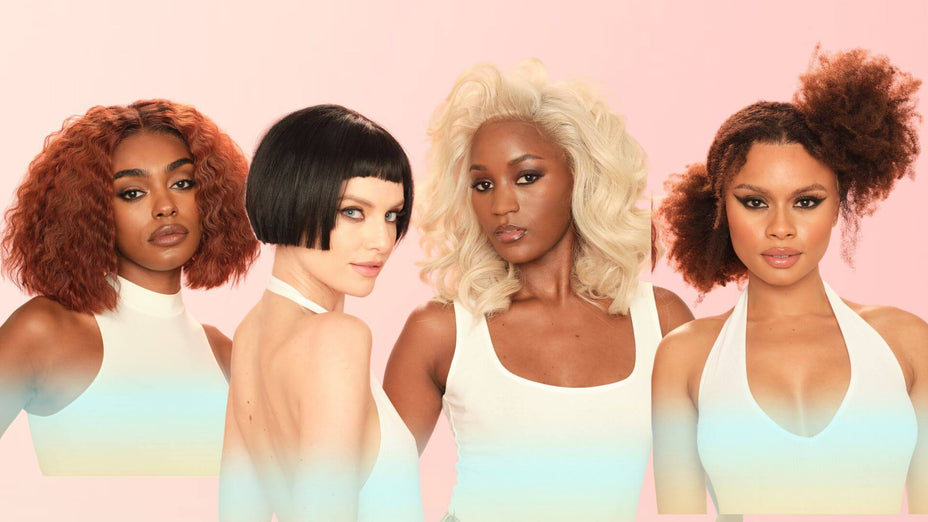Remy vs Non-Remy Hair: Know The Difference
Remy hair wigs When you are on the lookout for the best quality human hair wigs in the market and start researching online about the products, some terminologies repeatedly appear...

 Remy hair wigs
Remy hair wigs
When you are on the lookout for the best quality human hair wigs in the market and start researching online about the products, some terminologies repeatedly appear in the articles.
Remy hair, virgin hair, synthetic hair, non-remy hair, etc., are terms that we often read about in articles and blogs pertaining to human hair wigs and hair extensions. But what do they mean, and how are they different from one another? How do we conclude that remy hair is the best quality hair that’s available in the market?
To answer these questions and make our decision making process simpler while making a purchase for the best quality hair wigs, let’s find out all about Remy hair and non-Remy hair in this blog.
What Is Remy Hair?
To simply put it, Remy hair means when all the cuticles are intact, and the strands are aligned in the same direction. The hair cuticle is responsible for the smoothness, strength and shine of the hair. This is done to ensure that the hair remains tangle-free and has a natural look and feel to it.
Remy hair is usually collected from a single donor and is of the highest quality; it is the most sought after and expensive hair type in the hair industry.
HD Lace wigs, if made from remy hair hair will last longer than their counterpart.
What Is Non-Remy Hair?
Non-Remy hair is hair that doesn’t have its cuticles running in the same direction, i.e., the roots and ends of the hair are all mixed up. They are typically gathered from fallen hairs in the salons or cut hairs from the temple floors.
This hair is more prone to tangling and shedding when sewn into wefts. To address this issue, non-remy hair is put in an acid bath to strip the hair of its cuticles. This makes the hair less tangled and less prone to friction. They are coated with silicone to add shine to the hair, but after repeated washing, the shine wears off. Thus making them a cheaper alternative to Remy Hair.
What Is Virgin Hair?
There is another term that is most frequently used in the hair industry. And that is Virgin hair!
Virgin hair is basically hair that has never been dyed, colored or chemically treated. It is completely unprocessed and usually comes from a single donor. It is collected in such a way that all the cuticles are intact and run in a single direction. It is collected from the donor by tying their hair in a ponytail and then cutting it.
Because of the nature of the hair, it lasts for more than a year and premium hair products like extensions and wigs are made from them.
What Is The Difference Between Remy Hair And Non-Remy Hair?
 Clear all the doubts now!
Clear all the doubts now!
The primary difference between Remy and non-Remy hair lies in the way the hair is collected and processed, particularly in terms of cuticle alignment. Here are the key distinctions:
Cuticle Alignment
Remy Hair: The cuticles of Remy hair are preserved and aligned in the same direction, from root to tip. This ensures that the hair remains smooth, tangle-free, and has a natural appearance.
Even Kinky Curly Wigs made from Remy Hair will remain tangle-free and have smooth curls that will last upto one year or more, depending on how well they are maintained.
Non-Remy Hair: The cuticles of non-Remy hair may be stripped, or they may be in different directions. This can lead to tangling, matting, and difficulties in maintaining the hair.
Collection Method
Remy Hair: Collected in a way that keeps the cuticles intact and aligned. This often involves gathering hair directly from a donor and maintaining the natural direction of the hair.
Non-Remy Hair: Collected from various sources, including shed hair, salon floors, and random suppliers. The hair may be a mixture of different directions, as cuticle alignment is not a priority in the collection process.
Quality and Maintenance
Remy Hair: Known for its high quality, natural look, and ease of maintenance. It is less prone to tangling and matting.
Non-Remy Hair: More prone to tangling and matting due to the varied cuticle directions. It may require additional processing, such as the use of acid to remove cuticles and reduce friction.
Cost
Remy Hair: Generally more expensive due to the careful collection process and higher quality.
Non-Remy Hair: More affordable as it is often collected from multiple sources without specific attention to cuticle alignment.
Which One To Choose?
Remy hair is considered premium due to its aligned cuticles and natural appearance, while non-Remy hair is more affordable but may require additional processing to address issues like tangling and matting. The choice between the two depends on personal preferences, budget, and the desired quality of the hair product.

